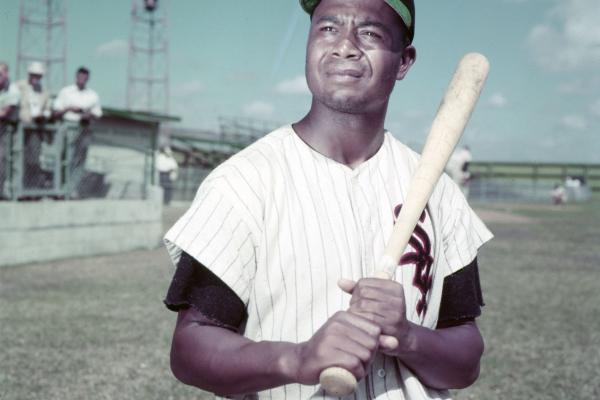I love the history of baseball. During recess, I teach my elementary school students about whiffle ball because it was one of my favorite games when I was a kid.
On Oct. 9, 1948, nearly 82,000 people filled Cleveland Municipal Stadium to watch game four of major league baseball's World Series between the Cleveland Indians of the American League and the Boston Braves of the National League.
More people were at that game than at any other game in the history of the World Series up to that time. The Indians held a shaky 2-1 lead in the best of seven series.
In the bottom of the fourth inning, there were two outs and the Indians were clinging to a 1-0 lead.
The Indians' 24-year-old Larry Doby dug into the batter's box at home plate and faced pitcher Johnny Sain of the Braves.
Doby threw right and batted left. His arcing swing was a beautiful thing that helped him hit .301 with 14 home runs in 121 games during the season.
He hit .396 over the last 20 games and that helped his team beat out the Boston Red Sox and make it to the championship series.
On the second pitch, Sain wound up and threw the ball toward home plate. Doby swung his bat and – crack – the ball took off toward right center field.
The crowd held its collective breath and let out a mighty roar as the ball sailed 420 feet into the stands for a home run.
It was the decisive run in a 2-1 win for the Indians, a victory that put them ahead three games to one in the World Series they would win in game six in Boston.
In the Cleveland clubhouse after the game, a photographer took a picture of Doby and winning pitcher Steve Gromek hugging tightly and grinning broadly, tenderly, cheek to cheek.
That picture was broadcast over NBC, CBS, and ABC that night and published in all of the major newspapers the next day.
Larry Doby was black and Steve Gromek was white. Gromek was from the working-class culture of Hamtramck, Mich., and Doby from the Jim Crow culture of Camden, S.C.
One year earlier, on July 5, 1947, at Comiskey Park in Chicago, Doby had become the second African-American behind the great Jackie Robinson of the immortal Brooklyn Dodgers to play for a major league baseball team and the first African-American to play in the American League.
It was a revolutionary picture because it showed the world a way white supremacy and racism could be overcome.
In Joseph Thomas Moore's Pride Against Prejudice: The Biography of Larry Doby, Doby says:
"The picture was more rewarding and happy for me than actually hitting the home run. It was such a scuffle for me, after being involved in all that segregation, going through all I had to go through, until that picture. The picture finally showed a moment of a man showing his feelings for me. But the picture is not just about me. It shows what feelings should be, regardless of differences among people. And it shows what feelings should be in all of life, not just in sports. I think enlightenment can come from such a picture."
Once, I looked at a class of second-graders as they were working on a bear project and said, "In case I haven't told you, I love you guys. I think you're great."
One of my students named Jimmy, an African-American boy with a sparkling personality, said, "Mr. Barton, you really love us? A teacher can't love students! Can they?"
They can. Every morning I ask myself, "Will my students have a picture in their minds today of the way I care for them, the way I love them?" How about my children of color? How about my LGBT students? How about all of my students? That kind of picture – along with courage, commitment, compassion, and creativity – can change our classrooms, schools, and world.
Trevor Scott Barton is an elementary school teacher in Greenville, S.C. He is a blogger for the Teaching Tolerance project of the Southern Poverty Law Center.
Got something to say about what you're reading? We value your feedback!
